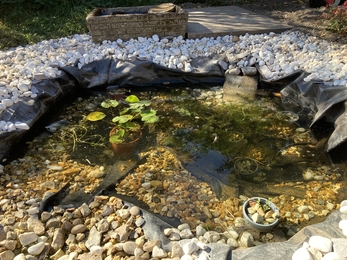Welcome to the September edition of our wildlife-friendly gardening blog. It’s hard to believe that autumn is approaching - the year is flying by!
The weather has been a bit of a ‘mixed bag’ this summer, but it has resulted in a bumper crop of fruit. Plenty of produce for us, passing jackdaws, blue tits, squirrels, and wasps to enjoy. Now don’t groan, I know wasps have a bad reputation, and it’s true that at this time of year they get ‘tipsy’ on rotting fruit, and we do need to be careful as they can be a bit irritable! They are, however, useful allies in the garden - pollinating flowers and plucking aphids and caterpillars off plants to feed their larvae. Wasp nests last just a few months and only the queen will survive at the end of the season so, if possible, it can be beneficial for both your garden and the wasps to leave nests be.




